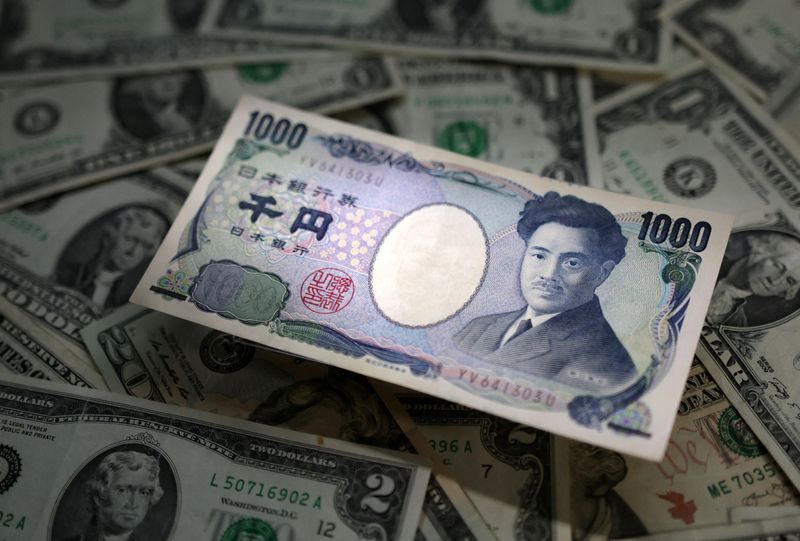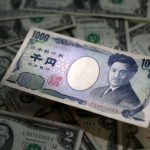LONDON/SINGAPORE (Reuters) -The dollar edged up on Thursday, recovering some of the previous day’s losses after the Federal Reserve forecast just one rate cut this year, although softer-than-expected U.S. inflation tempered some of those gains.
The yen remained under heavy pressure ahead of a Bank of Japan meeting on Friday and traders prepared for more volatility in the currency.
Price action in the currency market was relatively subdued on Thursday, compared with the previous day, when the dollar fell almost 1% at one point in the immediate wake of the release of the consumer price index (CPI) data, before ending the day with a 0.5% loss – still its largest in two weeks.
U.S. consumer prices were unchanged in May from April, against market expectations of a 0.1% rise.
“I feel it was a bit overdone, the reaction that CPI. It was almost a relief that it wasn’t worse. And that’s what sparked such a strong knee-jerk reaction,” City Index market strategist Fiona Cincotta said.
“We saw the selloff in the dollar pare back as we heard from the Fed and today, as well, it is trending higher. In the cold light of day, perhaps that inflation print maybe wasn’t quite as ‘cooling’ as at first the market read into it,” she said.
Inflation rose at an annual rate of 3.4%, still well above the Fed’s target of 2%.
Later on Wednesday, the Federal Reserve left the funds rate on hold at 5.25-5.5% and policymakers’ median projection for the number of cuts this year fell to just one, from three in March.
Despite the Fed’s projections, markets stuck with pricing in almost two 25-basis-point rate cuts this year, which helped reverse some of the losses in the dollar.
“Markets are looking at the U.S. dollar as weakening, with fluctuations in between,” said Westpac strategist Imre Speizer in Auckland. “That’s (mostly) due to Fed rate cuts, which are still priced in for this year.”
The euro staged its largest one-day rally of 2024 on Wednesday, following the U.S. inflation numbers. The single European currency has been subjected to intense volatility this week, stirred up by political uncertainty in France, where a poor showing in European Union elections prompted French President Emmanuel Macron to call a snap vote.
The euro, which skimmed six-week lows earlier this week, was flat on the day around $1.08, having jumped 0.64% the day before. The derivatives market shows the premium traders will pay for the option to sell the euro, rather than buy it, has grown to its largest since April.
Sterling, which also faces political risk from Britain’s upcoming general election on July 4, was flat at $1.2795, having gained 0.5% the day before.
U.S. Fed Chair Jerome Powell struck a familiar tone in his news conference and stressed policymakers would be sensitive to economic data. Although less cuts were projected for this year, policymakers had them pencilled for 2025 or 2026.
Still, it was cold comfort for the yen, which is struggling against downward momentum while the gap is so wide between near-zero Japanese rates and much higher short-term U.S. rates.
The BOJ concludes a two-day policy meeting on Friday and markets are expecting some sort of announcement or signal that the bank will be pulling back on massive bond purchases to allow further rises in Japanese yields.

That leaves the yen vulnerable to disappointment. It was last at 157.23 to the dollar and on the back foot on crosses – where it hit a 17-year trough of 97.06 per kiwi overnight and a 16-year low of 200.91 on sterling.
Overnight implied options volatility, a measure of trader demand for protection against big swings in the currency, rose to its highest in six weeks.
To read the full article, Click Here

